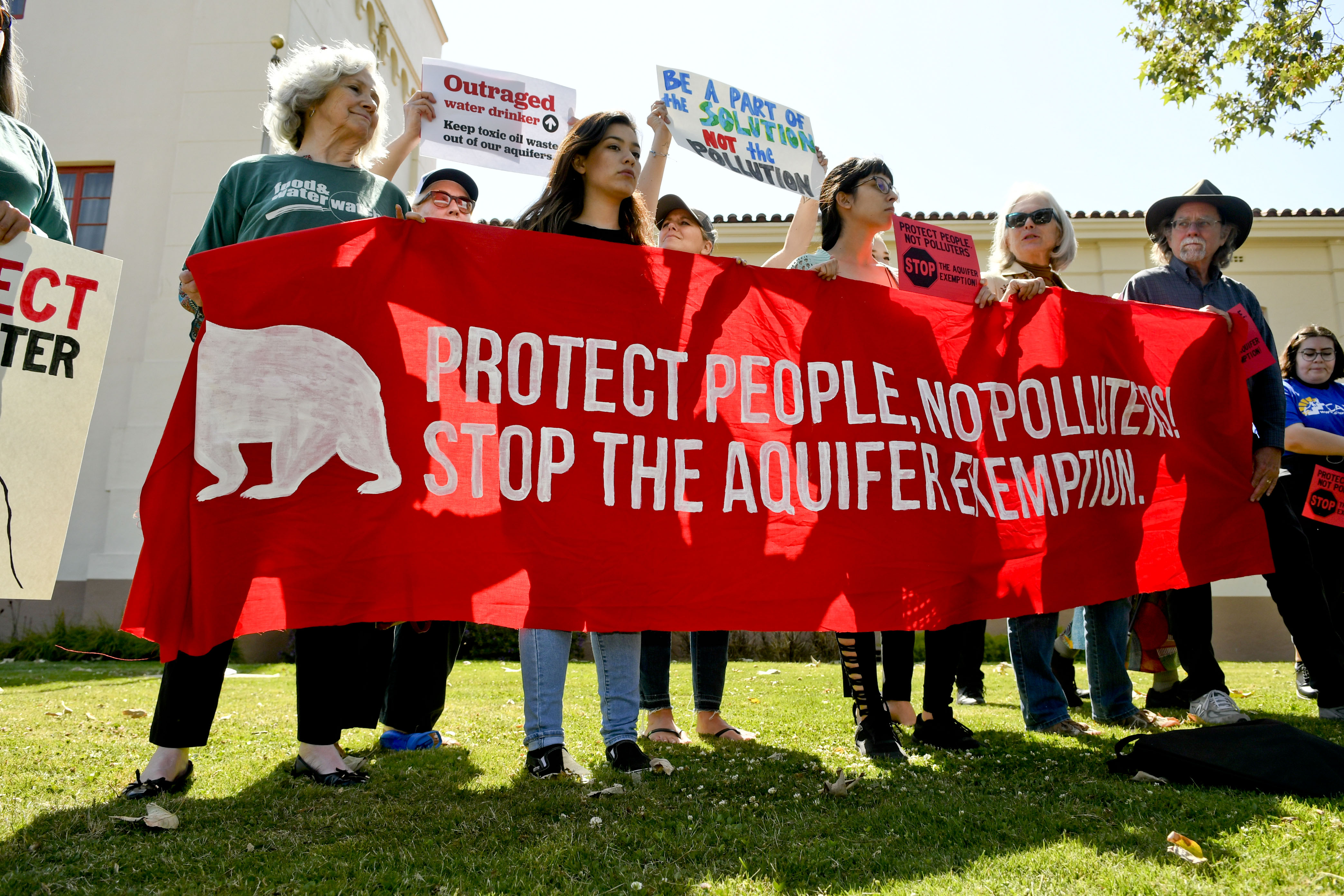Aera Energy Seeks Aquifer Exemption at Cat Canyon

Aera Energy, one of California’s largest oil and gas produces and owned by Shell and Exxon Mobil, has submitted an aquifer exemption for the Cat Canyon oil field located about four miles east of Orcutt and six miles southwest of Santa Maria. If approved, the exemption would allow underground fluid injection into the aquifer and re-establish oil production in the area. The oil field was discovered in 1908 and was drilled for nearly 100 years before being decommissioned in the 1990s.
The underground fluid injection being proposed for the Cat Canyon aquifer is necessary for steam injection and water flooding, both methods of enhanced oil recovery that increase oil production. Proposals for 296 wells have been submitted to Santa Barbara County separately from the proposed aquifer exemption. About half of the 296 wells will be gas and oil production wells and the other half steam injection, observation, and other use wells.
On June 5, a three-hour public hearing for the aquifer exemption was held in the Veterans’ Memorial Community Center in Santa Maria for residents to voice their concerns to the State Water Resources Control Board, the Central Coast Regional Water Quality Control Board, and California’s Division of Oil, Gas, and Geothermal Resources (DOGGR). According to the Santa Maria Times, well over 100 people showed up, with public opinion split but most public comments in opposition to the exemption.
In order for an exemption to be granted, the aquifer must meet national and state regulations. Cat Canyon meets all of the national criteria: It’s not a source of drinking water, it contains oil, and there are alternative sources of fresh water available. For Cat Canyon to be granted a state exemption, however, injection must not affect the quality of water that may be used for beneficial use. The injected fluid must also remain in the portion of the aquifer to be exempted.
The state criteria becomes a concern when considering that sitting above the proposed exempt aquifer are large fresh-water aquifers with usable water, some of which is used as drinking water by the city of Orcutt. In some areas, the two aquifers are separated only by a distance of about 500 feet, or a football field and a half. The California Department of Conservation guarantees that if an exemption is approved, area drinking water will not be affected. “There is plenty of impermeable rock separating the useful water from dirty water,” said Jeff Kimber, associate oil and gas engineer with the Conservation department’s Division of Oil, Gas, and Geothermal Resources.
Still, oil has never been welcomed with open arms in Santa Barbara County, and this time around is no different. It doesn’t help that a February report found 4 of 16 wells in Orcutt have been contaminated with oil-field fluids or that Ventura County supervisors voted unanimously to extend their drilling hiatus for the next six months until they determine whether oil wells are responsible for the contaminants found in three Oxnard groundwater wells.
The public comment period closes June 20 at 5 p.m.



